‘Oppenheimer’ Costume Designer Looks Back on Her Career Working On Classics Like ‘Fatal Attraction,’ ‘Showgirls’
- Oops!Something went wrong.Please try again later.
- Oops!Something went wrong.Please try again later.
- Oops!Something went wrong.Please try again later.
- Oops!Something went wrong.Please try again later.
- Oops!Something went wrong.Please try again later.
- Oops!Something went wrong.Please try again later.
After four decades in the film industry, costume designer Ellen Mirojnick is enjoying the biggest success of her career. The designer behind some of cinema’s most iconic movie characters, from “Showgirls” to “Fatal Attraction,” is now hoping for her first Oscar nomination for Christopher Nolan’s “Oppenheimer.”
“The challenge was about how to costume design all of the 73 characters so that the film could move from period to period without any telegraphing of what year it’s supposed to be,” Mirojnick told TheWrap.
In a light-hearted yet candid discussion spanning the lengths of her career, Mirojnick shared anecdotes from six of her earlier projects – everything from the white turtleneck dress in “Basic Instinct” to Keanu Reeves “one-change” outfit in “Speed” and the exuberant Las Vegas fashions of “Behind the Candelabra.”
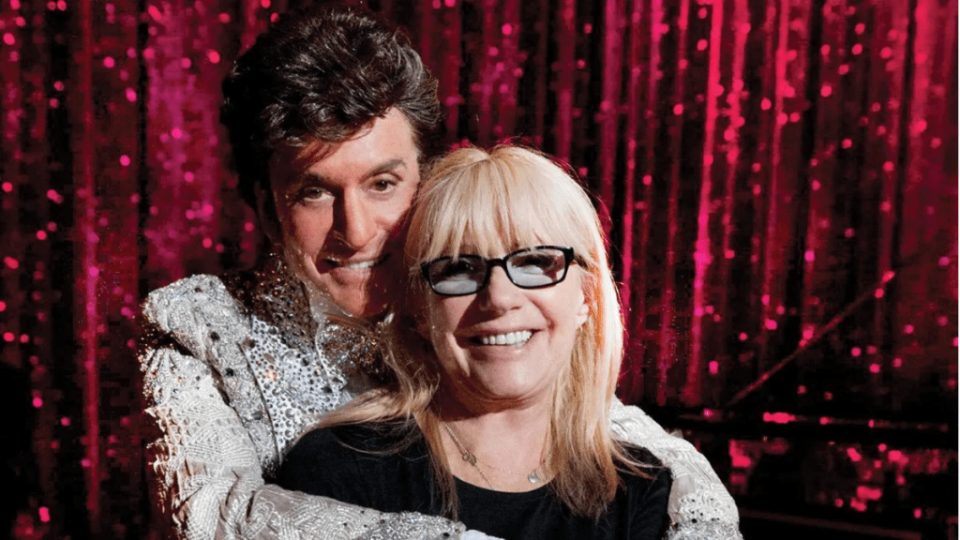
Over the years, she has netted 10 nominations from the Costume Designers Guild – including three wins – and was honored with the organization’s Career Achievement Award in 2016. She is nominated again this year for “Oppenheimer” and is also cited on the BAFTA long list for Best Costume Design.
And perhaps Mirojnick’s acclaim for “Oppenheimer” is, in a funny way, not such a coincidence. The costume designer revealed that after a lifetime of terrible vision (bifocals were necessary even in childhood), she underwent eye surgery a few months before beginning her work with Christopher Nolan.
“And it was startling,” she said. “I saw things for the first time that I could never see before. This was the first film that I designed in my entire career where I could see perfectly and sharply. Every other film, in my eyes, was in soft focus. On ‘Oppenheimer,’ I would say, in my brain, ‘Is that real?'”
Continue below for Mirojnick’s colorful recollections of a vivid, idiosyncratic career in the world of wardrobe.
“Fatal Attraction” (1987)
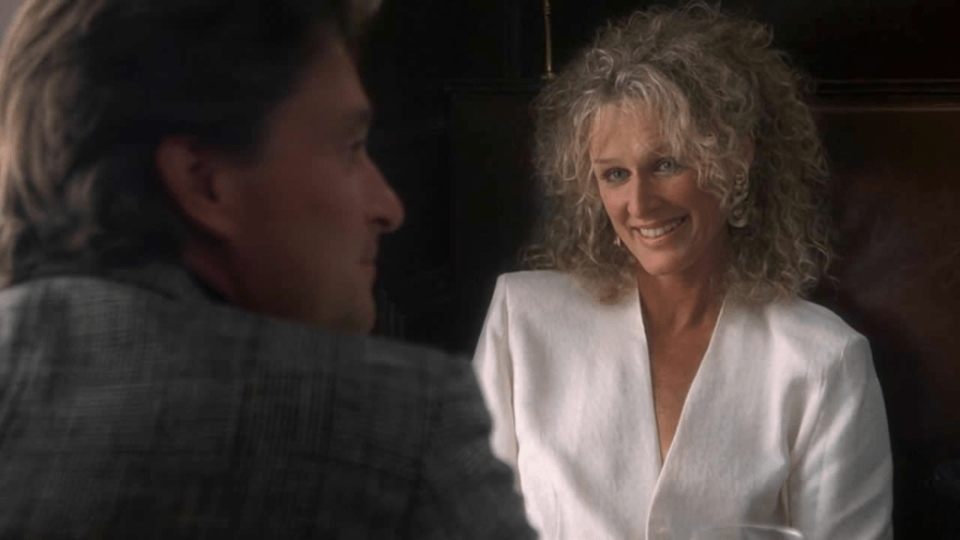
After steady work throughout the 1980s, Mirojnick’s big breakthrough came with this runaway box office hit about infidelity. It marked her first collaboration with star Michael Douglas and director Adrian Lyne:
With Adrian, I was very fortunate to meet him at a time where our sensibilities were matched, not only aesthetically, but in terms of storytelling. When it came to Glenn Close’s character, what was very important to both of us was that, although she was the villain, in a sense, we were not going to present or telegraph that to the audience in any way.
And so we dressed her often in white. In white, we found that she was kind of translucent and more unpredictable. It almost had a hallucinatory effect. The idea of black and white, or dark and light, was always part of our theme.
She’s in formal white when she first meets Dan, the Michael Douglas character. She looks innocent, but that white suit was also very fashionable of the time. And then she’s in a white t-shirt when he doesn’t go to the opera with her and she’s left alone. And that’s mirrored at the movie’s end, as well.
There were a couple of times where we did use black clothing, and in each case we thought carefully about it. She is in a black leather coat when she surprises Dan at his office. And also when she takes [his daughter] Ellen from school and goes on the roller coaster. Her silhouette during that scene is strong and we wanted that strength.
“Wall Street” (1987)
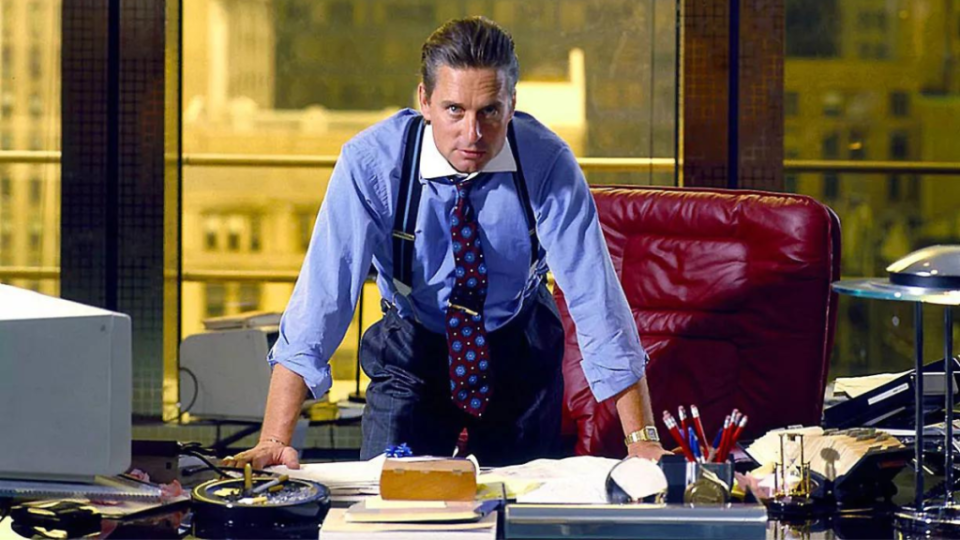
Immediately after “Fatal Attraction,” Mirojnick reconnected with Douglas for the actor’s immortal portrayal of Gordon Gekko in Oliver Stone’s financial world drama, “Wall Street.” The character’s everlasting fame, especially among young men in the banking world, can be traced directly back to his threads:
I remember saying, “How do I help to create a movie star image?” I looked at the 1930s and at Cary Grant and then that led me to the Duke of Windsor. There was a certain swagger that I wanted to achieve. So I really focused on British tailoring. At that time in New York, it wasn’t necessarily the style.
But there was a fellow in New York who manufactured this refined British clothing and I went to see him and I asked if he would tailor all of Michael’s wardrobe, all of his costumes. Six or eight different suits and sportswear, too.
As soon as Michael went to the first fitting and was able to put on the trousers and the suspenders and a shirt, he deeply understood something. He he felt the fabric around his body, he felt the smoothness in a way that he could glide through a room. And that really clicked in his brain.
That picture was released in December of that year. And in January, I got a call from the a journalist, saying, “Do you realize what you’ve done?” The journalist said practically every single young man, from age 25 to whatever, was walking around Beverly Hills with their hair slicked back and wearing a tie with suspenders. They all wanted to be Gordon Gekko.
“Basic Instinct” (1992)
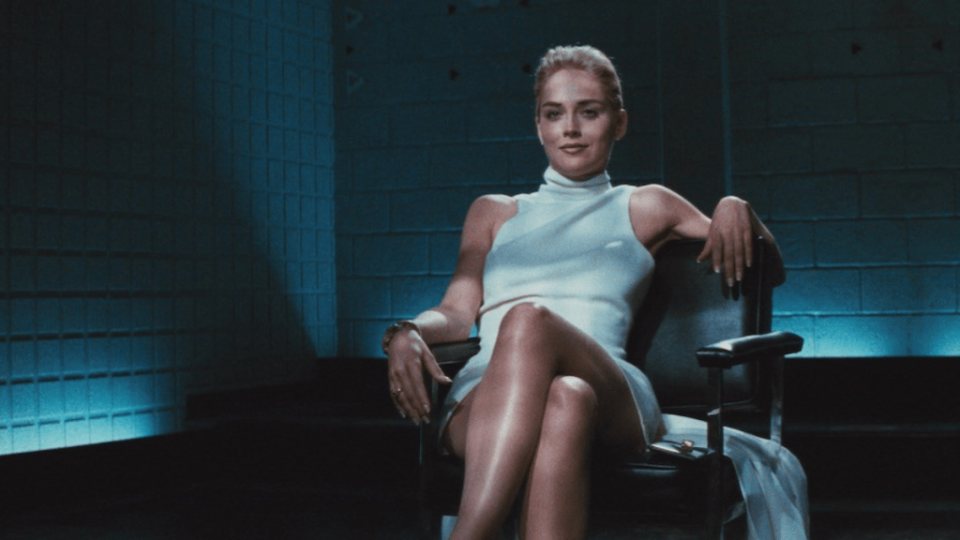
Yet another Douglas collaboration for Mirojnick, this 1992 noir is most renowned for Sharon Stone’s enduringly cool performance as the femme fatale Catherine Trammel. In interviews, Stone has often given credit to Mirojnick (including in this TikTok video) for helping to create an unexpected quality for the character, especially in the film’s iconic interrogation scene:
I do get asked a lot about this white turtleneck and jacket that Sharon wears in the police interview scene. And more than 30 years later, I mean, who knew that any of this was going to become famous?
First and foremost, she was an icy blonde, and what color evokes that better than white? For the interrogation scene, she wears an outfit that I’d call a winter white, because it’s more of a creamy, soft white color. It just warms the skin and it makes her even more gorgeous. She was center stage in that gray room.
Like “Fatal Attraction,” these are very complex villains. In fact, it’s not quite right to use that word because in both cases, we’re invited to question whether they are actually bad people. We got a kick, truthfully, out of portraying these dangerous characters in an unpredictable way, which still really served the story.
“Speed” (1994)
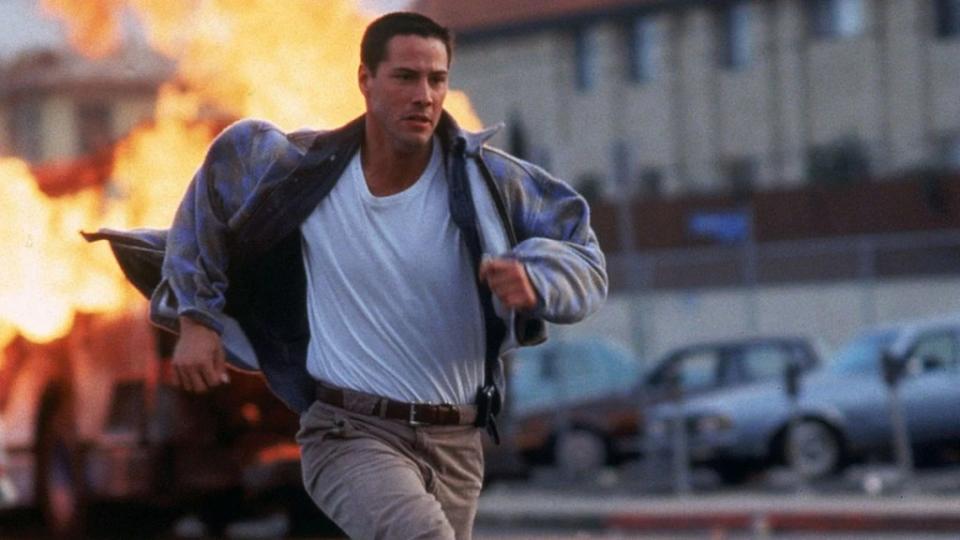
Keanu Reeves shaved his head and joined a gym for his debut as an action hero in this summer blockbuster. For Mirojnick, her challenge lied in wardrobing the actor in this “one-change movie” — essentially he wears a single outfit the entire film — while exploiting all the “hero” mythos inherent in the character:
Keanu Reeves was the man of the hour at that moment in time. The studio was absolutely terrified about his close-cropped hair. But [director] Jan de Bont, more than anything else, wanted to bring out a new kind of action hero. Jan refused to do any wardrobe tests. He didn’t want the studio interfering.
Ordinarily, for this kind of action film, I would have costumed Keanu in jeans, a leather jacket and a white tank top. That’s what an action hero was. That was Stallone, that was Schwarzenegger. It was proven over and over again.
But Jan wanted nothing to do with that. With Keanu, I remember doing fittings and somehow we got down to a pair of tan brown pants that he was very comfortable in, plus a white t-shirt and an over-shirt and a blueish plaid jacket. These were the layers that would be taken off over the course of the movie.
“Showgirls” (1995)
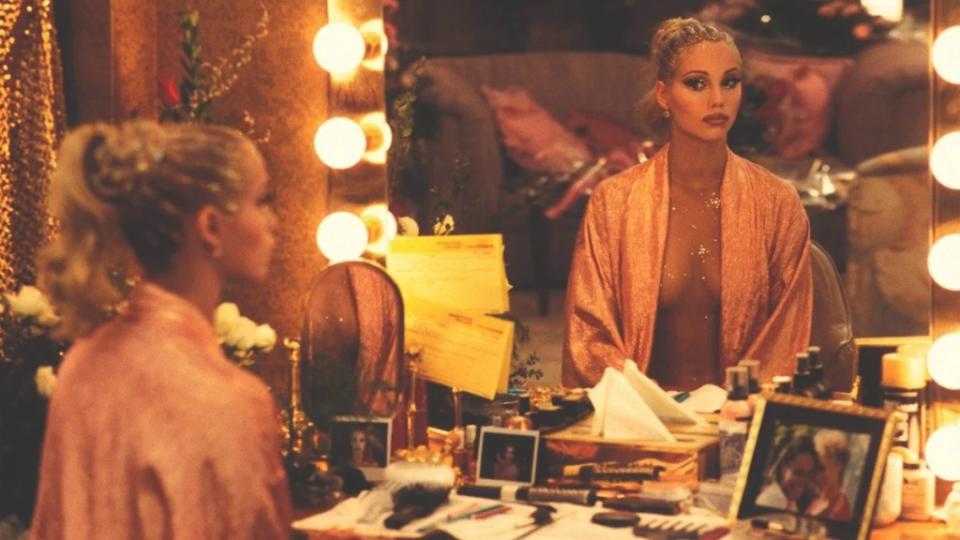
Mirojnick joined forces again with Verhoeven for the director’s most infamous movie, the reviled and beloved “Showgirls,” starring Elizabeth Berkely and Gina Gershon:
How often do I get asked about “Showgirls”? The answer is very often.
The design process was great fun. As I think back on it, it was really liberating to be wild and trashy and exuberant and graphic. And that was the whole point of it. God bless Elizabeth Berkley. She survived.
I remember designing a costume for Gina Gershon, when she comes out of the fire on stage. The volcano number in the film, which was so fabulous. It was a gorgeous costume and we did a whole round of fittings over four days. And Paul came in and said, “Ellen, she’s covered up too much!”
She was not covered up. Everything was exposed, practically. But Paul wanted it cut down. And as the maker of the outfit, I was terrified. But Paul wanted the costume cut until it was basically a string.
We would also dress all the dancers onstage and Paul would say, again, “No, they’re covered up too much.” I’d ask him, “Do you want them to be naked?” He’d say, “No, no, no, no, no, they must be in costumes!”
I mean, what can I say, I love Paul Verhoeven.
“Behind the Candelabra” (2013)
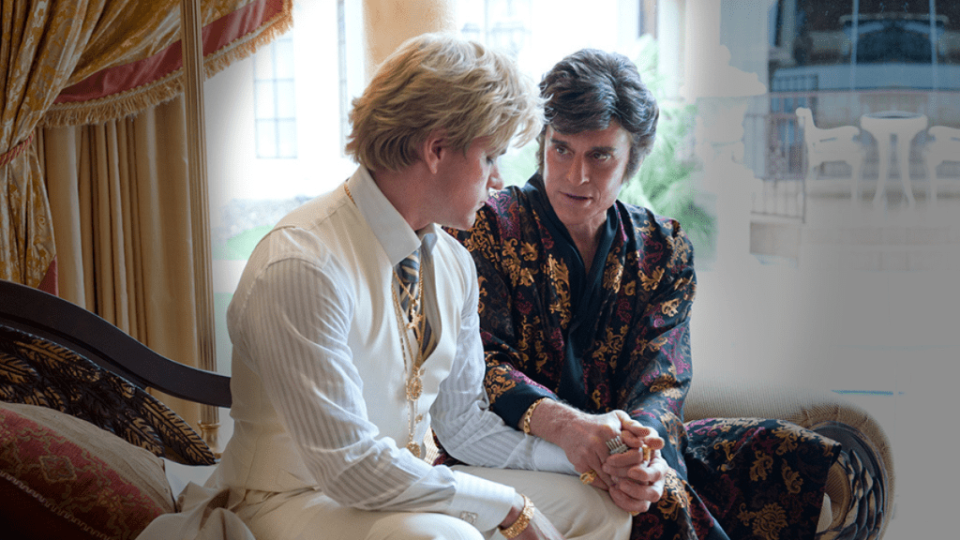
More than 25 years after “Fatal Attraction” and “Wall Street,” Mirojnick once again dressed Douglas, this time in furs and polyester for the actor’s touching portrayal of Liberace. Both Douglas and Mirojnick won Emmys for their work on the HBO film:
It was just so unexpected from Michael Douglas. He’s very vulnerable in a way that I don’t know if even Liberace was ever that vulnerable. How he and Matt Damon worked together, it was quite beautiful to see.
Of course, we did research photos of the twinning between the two characters. We did replicate that. We also replicated his stage shows in Las Vegas to the best of our ability, and with what our budget would allow.
Funny enough, we used the small budget to our advantage. When I tried to have a suit tailored using expensive Italian material, it was shit, just shit. We figured out that the cheaper the material, the better the costume. I’d go downtown in Los Angeles and get the cheapest polyester.
A fake fiber worked beautifully and Michael could move in a particular way, that incredible 1970s silhouette. We had such great fun designing all of his shirts and his colors and all of the accessories. Michael was totally on board, of course, and that’s what makes all the difference.
“Oppenheimer” (2023)

Mirojnick’s latest project is the acclaimed summer juggernaut, which earned a $1 billion worldwide box office and is positioned as a favorite to earn multiple Oscar nominations. Director Christopher Nolan instructed her early on, “We are not making a documentary,” which afforded her the freedom to apply a sense of style to the period fashions, especially in regards to star Cillian Murphy. She vividly remembers the Fall 2021 fitting with Murphy when she witnessed the character come to life:
There we were with this magnificent actor who basically came in as a vessel for Oppenheimer. There was nothing attached to him. We began to try different things and at one point, everything was mismatched. But it didn’t matter.
It was like collage, it was like sculpting. And at one point we put on a pair of trousers that were the right shape, with a belt, a shirt, a tie. And you could see everybody’s face light up in the room.
I can’t tell you how many pins we had in the clothes, just to assume the shape and the silhouette of Oppenheimer. The clothes were three or four sizes too big for Cillian. But at a certain point, Chris said, “That’s it. We’re putting him on screen tomorrow just like this.”
We had a wonderful tailor who eliminated all the pins. But the shape was perfect and it gave off the feel of Oppenheimer, organically. It all started within that room on that Monday at 1:00 in the afternoon, when Cillian Murphy walked in the room and suddenly Robert Oppenheimer was there. It was all channeled inside him. I’ll always remember it as one of those magical experiences in my career, where you find the answer at the very beginning. To see Chris’ vision combine with Cillian’s performance and all those elements come together with a simple beauty in the design.
To me, the first time I saw the finished film at the premiere in New York, I cried through most of the film. There was so much emotion. And the only thing that I could say afterwards was that it just felt original. I honestly felt like it was an original piece of art that was a painting that could last forever and become such a classic. In 30 years, people will still be talking about it.
The post ‘Oppenheimer’ Costume Designer Looks Back on Her Career Working On Classics Like ‘Fatal Attraction,’ ‘Showgirls’ appeared first on TheWrap.

